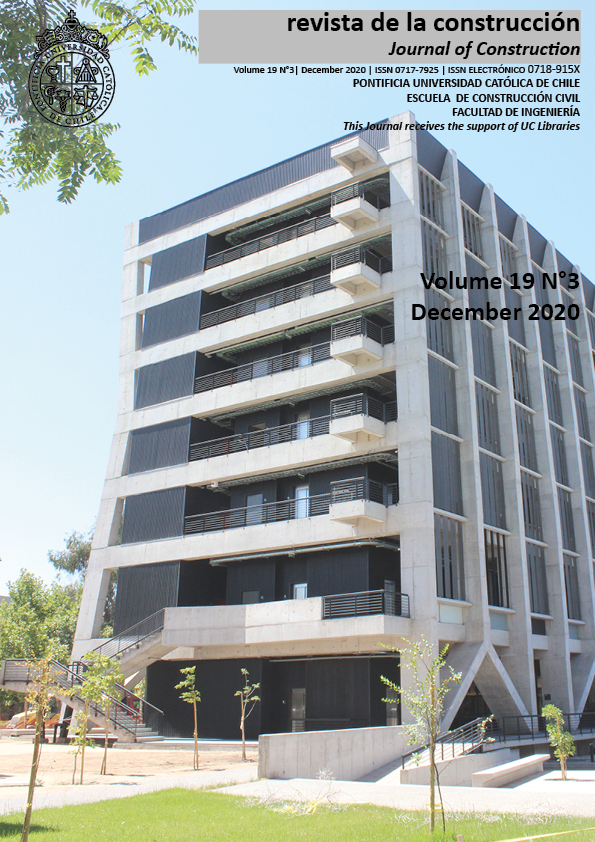Strength and microstructural behavior of concrete incorporating laterite sand in binary blended cement
DOI:
https://doi.org/10.7764/rdlc.19.3.422-430Keywords:
Laterite Sand, M-sand, Strength, Microstructure, Thermogravimetric AnalysisAbstract
Laterite, due to its wide availability and low cost, is considered as a societal building material in tropical and sub-tropical regions of the world. Excavation of the laterite leaves laterite stones as scrap which accounts for around 25-30%. These scraps being a hindrance for the further excavation of the laterite in the quarries can be crushed and used to meet the demand of fine aggregates in the construction industry. Performance indicators such as workability, compressive, split-tensile and flexural strength are measured to evaluate the suitability. M30 grade of concrete specimens were produced with these crushed scraps by replacing M-sand at the intervals of 25% ranging from 0% to 100%. Laterite replacement of 25% could enhance the performance after 28 days. Not limiting only to strength characteristics, its morphological features were also understood by conducting Scanning Electron Microscopy (SEM), Energy Dispersive X-ray Spectroscopy (EDS), X-Ray Diffraction (XRD) and Thermogravimetric analysis (TGA) for the optimum mixes.
Laterite, due to its wide availability and low cost, is considered as a societal building material in tropical and sub-tropical regions of the world. Excavation of the laterite leaves laterite stones as scrap which accounts for around 25-30%. These scraps being a hindrance for the further excavation of the laterite in the quarries can be crushed and used to meet the demand of fine aggregates in the construction industry. Performance indicators such as workability, compressive, split-tensile and flexural strength are measured to evaluate the suitability. M30 grade of concrete specimens were produced with these crushed scraps by replacing M-sand at the intervals of 25% ranging from 0% to 100%. Laterite replacement of 25% could enhance the performance after 28 days. Not limiting only to strength characteristics, its morphological features were also understood by conducting Scanning Electron Microscopy (SEM), Energy Dispersive X-ray Spectroscopy (EDS), X-Ray Diffraction (XRD) and Thermogravimetric analysis (TGA) for the optimum mixes.





